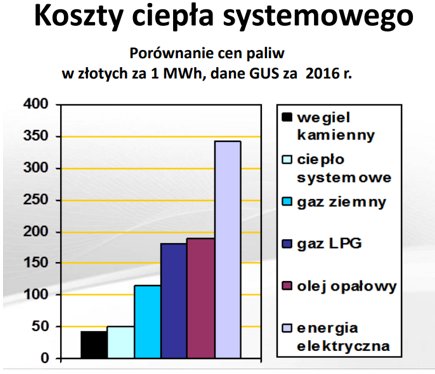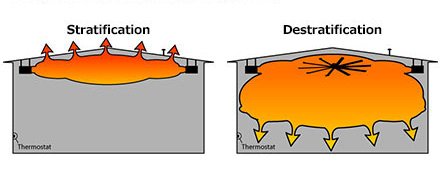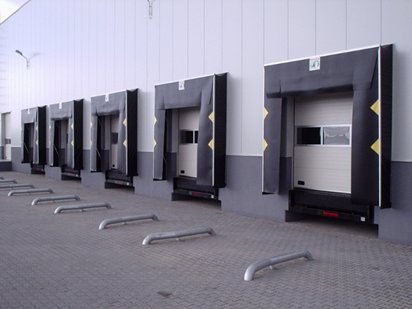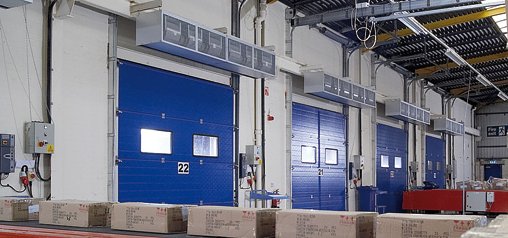Heating costs in warehouse buildings

When deciding to rent a high storage warehouse, it is worth paying attention not only to the "rent" costs, but also to how the facility will be heated. Keeping the temperature of about 14 degrees Celsius in winter in an A-class building generates costs of as much as 40% of the annual rent. Depending on the building and type of business, heating costs may vary considerably between facilities.
Legal norms
Minimum temperature in a workplace.
In any workplace, the employer should ensure a temperature not lower than 14 degrees Celsius, unless technological considerations do not allow it. In office rooms, the temperature cannot be lower than 18 degrees Celsius.
Regulation of the Minister of Labour and Social Policy of 26 September 1997 on General Health and Safety at Work Regulations (consolidated text: (Dz. U. [Journal of Laws] of 2003, No. 169, item 1650 as amended).
When does a warehouse become a workplace?
If employees stay in warehouse rooms for more than 2 hours during one working shift, and the work is not of an occasional nature, the warehouse should be treated as a workplace in accordance with Article 2 of General Health and Safety at Work Regulations.
Heating costs
Because these costs are difficult to estimate, this item is often depreciated in the process of renting warehouse space, and can significantly affect the total rental costs that the client ultimately incurs.
There are situations when a new tenant assumes an average annual heating costs of about PLN 1 per sq m, and in the end it may even be a multiple of this amount.
Gas infrared heatres
Currently, the most efficient and most commonly used gas heating system in modern warehouse buildings. The infrared heating system began to develop in the United States in the early 1970s, after patenting the first radiator with straight tubes and screen. It is currently used in over 90% of industrial buildings in the USA.
Thermal radiation generated during the use of a gas radiator is comparable to the operation of solar radiation, because it carries energy by means of electromagnetic waves. This energy changes into heat when in contact with the absorbing unit. In this way, the heat flow from the radiator to the heated object occurs at the speed of light without heating the air.
Infrared radiators therefore heat directly the floor and lower layers of the warehouse, and air installations heat the air, which then floats to the ceiling layer.
A study conducted in a building with an area of 4,000 sq m and height of 10 m showed that at 12 degrees Celsius, infrared gas heaters compared to the conventional method give about 68% savings in heating costs.

Kowalczyk M.: Promienniki podczerwieni. Ogrzewanie XXI wieku, Solaren-Bis, Gdańsk 2000.
In addition, by investing in a high-efficiency system with heat recovery, you can save up to 35% of heating costs on fuel (the difference between the tested radiant heaters of different efficiency).
Dudkiewicz E., Fidorów N., Jeżowiecki J. Wpływ sprawności promienników podczerwieni na koszt zużycia energii. Rocznik Ochrona Środowiska, t. 15, cz. 3/2013
Main advantages of gas infrared heaters:
- saving heating costs up to 75%,
- they only heat the places we want to be heated,
- immediate heating effect,
- there is no additional air circulation and dust in the heated room, and thus there is less dust,
- the possibility of heating the lower parts of facilities or rooms occupied by people or animals, not the ceiling part,
- reduction of energy consumption.
Due to the high temperature, gas infrared heaters should be installed away from stored goods and flammable substances.
Most often they are installed over communication routes on the edge of warehouse space.
Air water heaters
The heat in such a system can come from the boiler room or be recovered from production.
System heat
Some warehouse buildings located in cities have access to system heat, which is more than half cheaper than energy obtained from natural gas, and the dynamics of price changes is the lowest of all heating solutions in Poland.
This makes system heat competitively priced for both residential and industrial buildings.

The efficiency of the air heating system in the warehouse is improved by destratifiers which direct warm air from the ceiling zone to the area where the people are and can reduce the demand for thermal energy by up to 30%.

Building thermal insulation
The lack of or poor thermal insulation of the building may even involve the multiplication of heating fees. It is worth to pay attention to the thermal insulation of the roof which will be the most heat-affected.
In the case of renting existing buildings, in order to find out the costs, which are also affected by the thermal insulation of the building, the fastest way is to ask the owner to present simulations or invoices for heating the space and recalculate them proportionally per square metre.
Type of activiy

The companies with a significant turnover of goods are exposed to largest losses of heat in warehouse buildings. Through the open unloading dock or gate in a second, even a few dozen cubic metres of cold air can get inside which then has to be heated. The biggest losses are generated by cross-dock warehouses when the docks are opened on both sides of the warehouse.
Modern unloading docks are equipped with sleeves surrounding them which reduce air rotation.
For companies with the largest exchange of goods, air curtains, which are most often used in large logistics centres, also come to the rescue.

A properly selected curtain creates the blowing air stream that can resist the force of the penetrating outside air. This solution is able to stop up to 80% of the air.
Research conducted by AMCA International shows that air curtains are more effective than the use of a traditional vestibule and ultimately lead to the reduction of energy losses in buildings.(link) .
Summary
We hope that the above information will show you what heating and heat loss prevention technologies are used in modern warehouse buildings.
Bearing in mind the described factors affecting heating costs, it is worth asking the owner of the building to present real costs and consider them when estimating the total cost of lease of warehouse space.
